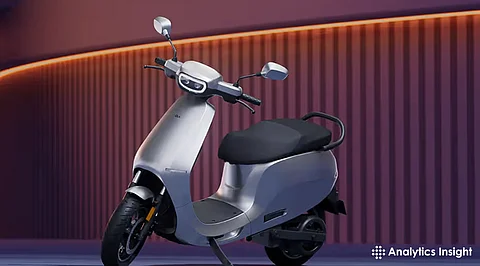Electric scooters have captured the nation's attention in India, driven by rising fuel prices, pollution concerns, and state subsidies. To date, the market is booming with options suited for city riders and eco-friendly drivers as of March 25, 2025. This piece looks into the top electric scooters in the Indian market for 2025, their features, advantages, and what makes them stand out in a cost-effective and sustainable context.
The Transition to Electric Mobility
India's transportation landscape shifts swiftly with electric vehicles gaining ground. Initiatives such as the FAME III, which came in 2024, offer subsidies on electric two-wheelers, making them more affordable in more pockets. Urban areas crowded with pollution feel electric scooters are a miracle with no tailpipe emissions and lower noise.Ola, Ather, and Bajaj are the ones who lead the way in bridging the gap between functionality and innovation to address multiple needs in 2025.
Leaders in 2025
There are some electric scooters that cut above the rest in India's 2025 market. Ola S1 Pro Gen 3 is the one that takes the lead, with a range of 195 km and a top speed of 120 kmph. Its 11 kW motor guarantees fast acceleration, and there are facilities such as a 7-inch touchscreen screen and proximity unlock for tech-savvy drivers. It costs around Rs 1.35 lakh (ex-showroom) and offers premium performance balanced with affordability.
The Ather 450 Apex is based on, for the purpose of agility with 150 km range and 90 kmph.
It is driven by a 3.7 kWh battery that propels its 7 kW motor, along with a traction control system for bad roads. At Rs 1.49 lakh, its stylish body and intelligent dashboard attract city professionals. Bajaj Chetak 3501, at Rs 1.42 lakh, blends old with new, with a 153 km range and 73 kmph speed. Its steel body and retro look appeal to those who are looking for electric efficiency in the traditional sense.
TVS iQube ST at Rs 1.85 lakh offers a range of 150 km with a 5.1 kWh battery at a speed of 82 kmph. Spacious under-seat storage and tough build make it ideal for families, while its 7-inch TFT display adds a dash of style. Hero Vida V2 Pro, completing the lineup, provides a 165 km range and 90 kmph top speed for Rs 1.15 lakh. Cruise control and an easily removable battery make it perfect for everyday use.
Performance and Technology Highlights
Performance indicators show stark improvements. Ola S1 Pro Gen 3's motor efficiency reduces charging time to 6 hours, and Ather 450 Apex's regenerative braking enhances range in stop-go traffic. Bajaj Chetak 3501's IP67-rated motor remains water- and dust-proof, promising longevity on monsoon-rain-soaked roads. TVS iQube ST's double battery configuration increases capacity, and Hero Vida V2 Pro's fast-charging feature—80% in 4 hours—will appeal to hectic schedules.
Technology is seamlessly integrated. Ola's Krutrim AI suggests voice-command updates in the future, while Ather's dashboard is smartphone-synced for navigation. Bajaj goes for minimalism with a digital dashboard, and TVS provides geo-fencing for security. Hero Vida's app monitors battery health, a gesture to maintenance-focused buyers.
Challenges in the Electric Scooter Arena
Restrictions exist despite advancement. Charging points, though on the rise, lag behind in rural regions, with cities like Delhi and Bengaluru more advanced. Battery swapping, available with Ola and Hero Vida, is niche. Range anxiety besets riders on longer journeys, although 150-195 km is enough for most trips. Exorbitant upfront prices—Rs 1.15 lakh to Rs 1.85 lakh—scare some, though subsidies mitigate long-term gains in fuel and maintenance savings.
Petrol scooter competition remains, with quicker refueling and well-established service networks. Battery wear and tear over decades is another issue, although 3-5 year warranties assuage concerns. Manufacturers respond to these challenges with innovation, but take-up depends on infrastructure expansion.
Market Impact and Future Outlook
January 2025 sales figures put TVS iQube at 24,991 units, Bajaj Chetak at 21,045, and Ather models in stiff competition, according to BikeDekho. Ola's leadership is based on competitive pricing and offerings, while Hero Vida's price advantage widens reach. Rural penetration is slow, but 80% of sales come from urban areas, driven by traffic congestion and eco-awareness.
By 2030, electric two-wheelers could take up 30% of India's market, based on NITI Aayog's projections, if charging points increase and the price of batteries falls. Advancements such as Ola's 4680 Bharat Cell signal higher energy density. The model lineup of 2025 is the foundation for this transition, balancing performance and sustainability.
Conclusion: A Charged Path Forward
Indian electric scooters for 2025—Ola S1 Pro Gen 3, Ather 450 Apex, Bajaj Chetak 3501, TVS iQube ST, and Hero Vida V2 Pro—are symbolic of a revolution in mobility.All-day ranges of 150-195 km, peak speeds of 120 kmph, and smart features redefine daily commutes. Concerns of infrastructure and affordability remain, but the trend is up. India's roads, previously petrol-dominated, now hum with electric promise, signaling a greener, silent future.
.png)

